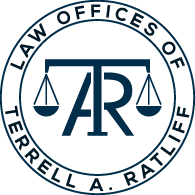Nobody enjoys having their day ruined by a police stop, especially if they are driving. When you’re stopped by the police, it’s natural to feel nervous, confused, and even angry. However, police checks are important to keep society in order, and how you react to the circumstance may have a significant influence on the result of such interactions. You must know how to interact with the police, as well as how to respond and behave in the least suspicious way necessary.
Several factors influence whether the police pullover results in a simple warning or, in the worst-case scenario, an arrest. But first, it’s critical to understand why you were pulled over. If you need help because you were pulled over by the police and accused of either a crime or a traffic offense, contact The Law Office of Terrell A. Ratliff for a consultation.
Getting Pulled Over By The Police
If you’re pulled over by the police, we recommend that you consider the following recommendations:
Pullover on the side of the road
Turning on your hazards to let the police know you’re being pulled over, using your signal lights to suggest lane changes, and pulling over at the widest part of a shoulder so the officer has enough room between themselves and highway traffic are the safest ways to pull over (to protect yourself, the officer, and other motorists on the road).
Follow the officer’s directions as soon as possible.
Drivers must pay attention to what the officer says and obey the officer’s commands.
If you’re asked for identification or your driver’s license, provide it to them.
Upon the officer’s request, drivers must present their driver’s license, registration, and insurance card. Keep your driver’s license, insurance card, and registration in a convenient location. Inform the officer that you will be retrieving these documents.
Right to remain silent
You have the right to stay silent after providing the relevant identity and information. Once correct documentation has been supplied to the police, drivers and passengers are not required to answer any further questions.
Maintain visibility of your hands, ideally on the steering wheel.
When the police see your hands, it calms them down and they don’t believe you’re attempting to hurt them. Any rapid movement or removal of your hands will have a detrimental influence on the scenario.
Follow the instructions
You should follow the officer’s instructions while stepping out of the car. Officers have the authority to order drivers to exit their vehicles for any reason. In rare cases, they may ask passengers to exit the car. Police may use reasonable force to remove drivers or passengers who do not comply with exit directions.
Do not argue
Don’t argue on the road; you can submit a complaint afterward and consult with our attorney. You always have the option of filing a complaint later if you have a problem with the stop or the officer’s actions. Following an officer’s directions at the scene does not renounce your right to contest the stop, arrest, or any of the officer’s orders afterward.
Contact Our Office
If you’ve never been stopped before, you might be unsure of what to do — and what not to do. Doing and saying the proper things can put the officer conducting the traffic stop at ease, and you can even get away with a warning if you do so. However, speaking or doing the incorrect thing can quickly aggravate the issue. If you face criminal charges as a consequence of the traffic stop, it might potentially hurt your case. As a result, every driver should be aware of what to do if they are stopped by the authorities.
In New Jersey, Pennsylvania, and around Philadelphia, our attorneys at the Law Office of Terrell A. Ratliff have successfully helped many clients who get pulled by police. To schedule a consultation, please contact one of our law offices.
